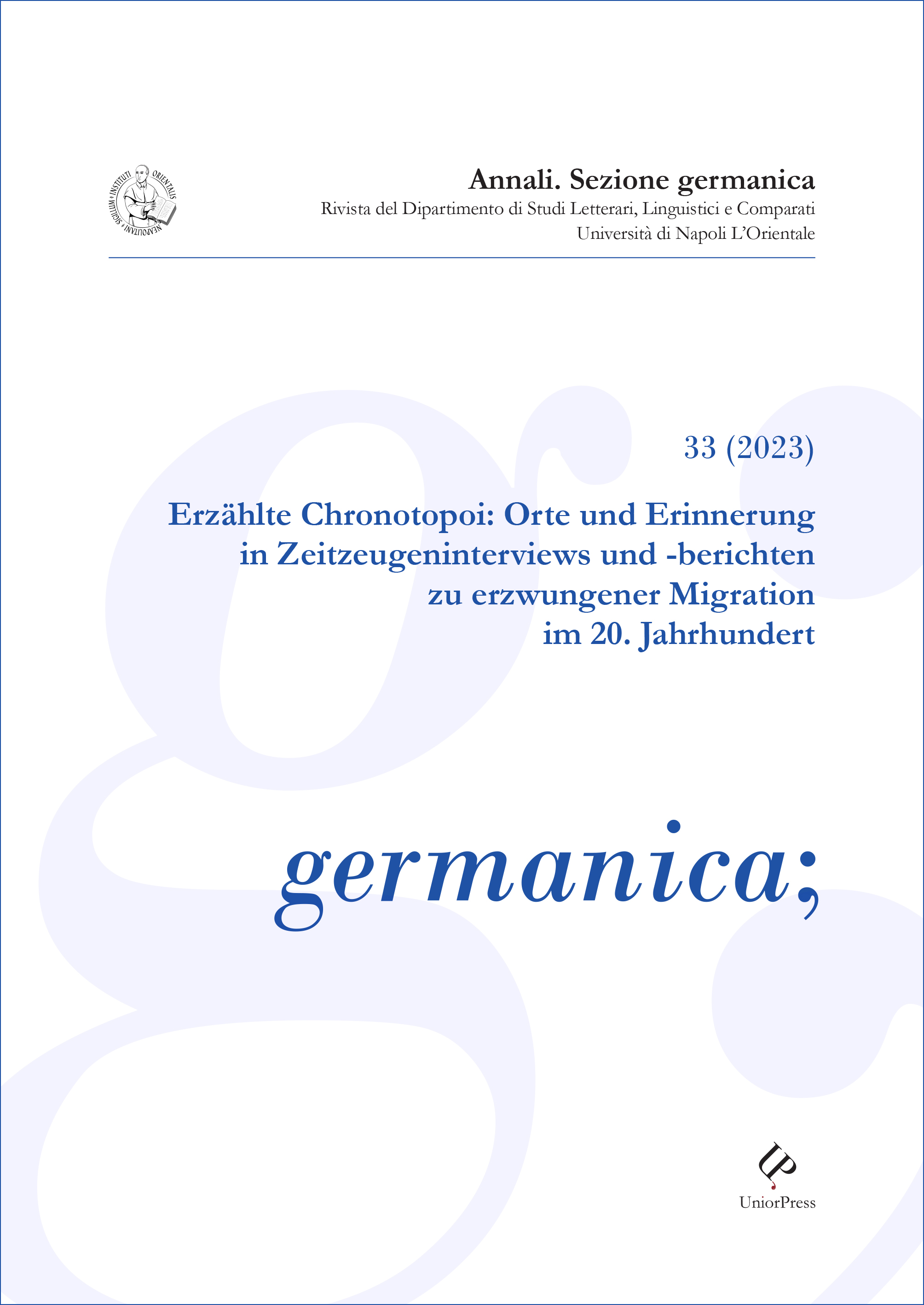Cronotopi della crisi. Marcatori spaziali simbolici nei racconti di emigranti ebrei in Palestina
Abstract
Nella riformulazione che ne propongono la sociolinguistica e la narratologia di impianto sociolinguistico, il concetto di cronotopo di Bachtin consente un approccio innovativo all’analisi delle narrazioni orali raccolte nell’Israelkorpus, in quanto strumento efficace per ricostruire la complessa interazione tra il contesto culturale di riferimento, le norme e i discorsi culturali, le esperienze personali dei narratori, nonché le rispettive situazioni narrative in cui si svolgono le interviste. Richiamandosi al concetto di cronotopo della crisi, il presente contributo analizza le discontinuità narrative che si riscontrano nell’utilizzo di alcuni marcatori spaziali simbolici di contenuto antisemita. Per l’analisi dettagliata di due esempi tratti dal corpus si ricorre agli strumenti dell’analisi narrativa, incrociati con parametri specifici della ricerca sul linguistic landscape. Esaminando il modo in cui l’identità viene rinegoziata in seguito alle disposizioni che in Germania via via modificano l’accesso degli ebrei agli spazi pubblici, si mette in luce la connessione tra restrizioni sempre maggiori dello spazio, esclusione e stigmatizzazione.
Copyright (c) 2024 Barbara Häußinger

This work is licensed under a Creative Commons Attribution-NonCommercial-NoDerivatives 4.0 International License.
Gli autori che pubblicano su questa rivista accettano le seguenti condizioni:
- Gli autori mantengono i diritti sulla loro opera e cedono alla rivista il diritto di prima pubblicazione dell'opera, contemporaneamente licenziata sotto una Licenza Creative Commons che permette ad altri di condividere l'opera indicando la paternità intellettuale e la prima pubblicazione su questa rivista.
- Gli autori possono aderire ad altri accordi di licenza non esclusiva per la distribuzione della versione dell'opera pubblicata (es. depositarla in un archivio istituzionale o pubblicarla in una monografia), a patto di indicare che la prima pubblicazione è avvenuta su questa rivista.
- Gli autori possono diffondere la loro opera online (es. in repository istituzionali o nel loro sito web) prima e durante il processo di submission, poiché può portare a scambi produttivi e aumentare le citazioni dell'opera pubblicata (Vedi The Effect of Open Access).

